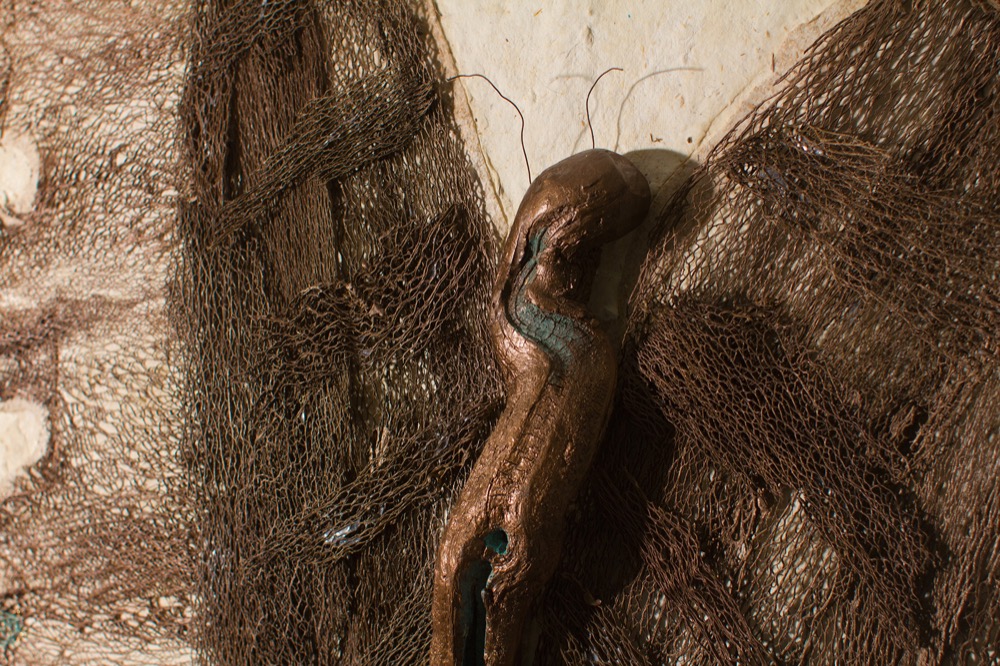Lydia Miszuk has lived in Arizona since 1956 and has watched the once separate cities of the metropolitan area merge into one huge metropolis. Lydia is married and has two adult sons. Her husband is an a jewelry maker. Her sons are sculptors and musicians. Lydia studied Psychology at ASU, but decided that her interests were more artistic and she attained a BFA in Fiber Arts instead.

The women in an old fibers group I once belonged to discussed the fact that they were most influenced by their grandmothers artistically, and most of them are quilters. If that is the case, it is possible that mine also influenced me. One was a knitter and crocheted, inspiring my tactile nature and the other was a Wyoming pioneer woman, inspiring my love of the outdoors. My mother, however, gave me the confidence to be true to myself.
My work has always involved manipulation of materials –if I can’t touch it and move it around, twist and fondle it, it has no meaning for me. Much of my inspiration comes from the creative synergy suggested by nature’s offerings. Gathering of materials therefore, becomes the imaginative base of my work structure. While the natural materials do not always appear in their primary state once a work is finished, the fibers are always present. The gathering and usage of materials that have lived through art is a great personal satisfaction. The resulting artistic dimensions have consistently surprised and stretched my creativity.
When I first moved here as a small child, I was amazed to see the soldiers standing at attention on the desert. When I found out they were cactus, I was even more impressed. I had never seen (or imagined) anything so botanically human-like before. That image of the Saguaro has stuck with me throughout the years. Later on, whenever I drove through the desert I thought that they wee guarding the desert. I never responded to it artistically until a friend told me of an Indian myth that the Saguaro were really our ancestors come back to watch out for us. (I’ve never found this in any myth books, but the story appealed to my romantic nature.)
In 1994 a 25-ft Saguaro that lived in my backyard fell over and died. I wanted to commemorate its passing by recycling it wood-like skeleton to create an art piece that showed its ancestral image. The skeleton was pulverized into handmade paper and cast in the image of a man…. Saguaro man, the ancestor. Since then I have made handmade saguaro paper into many human-like images. My sculpted human figures still retain the Saguaro physique and rounded arms.
When you tell people that you use certain things in your work, all of a sudden that’s what they give you as gifts. Since I started working with natural fibers, friends and neighbors have called me to come get their fallen Saguaros. I would never go out and kill a wild Saguaro for my work. Who knows whose ancestor it might be?
Having tried the Saguaro, I became confident enough to try “branching out” to using other desert plants for papermaking. Most desert plants make beautiful paper. The color /palette ranges from a silky gold to reddish brown maroon, the colors of the desert. Joshua Tree is the lightest paper, almost white. I now make paper using Prickly pear, Yucca, Tumbleweed, Agave, Palm Leaves, Palm Bark, Palm Roots, Joshua Tree, Cholla, Ocotillo, Woodpeckers Birdsnest, Palo Verde and, of course, Saguaro.

